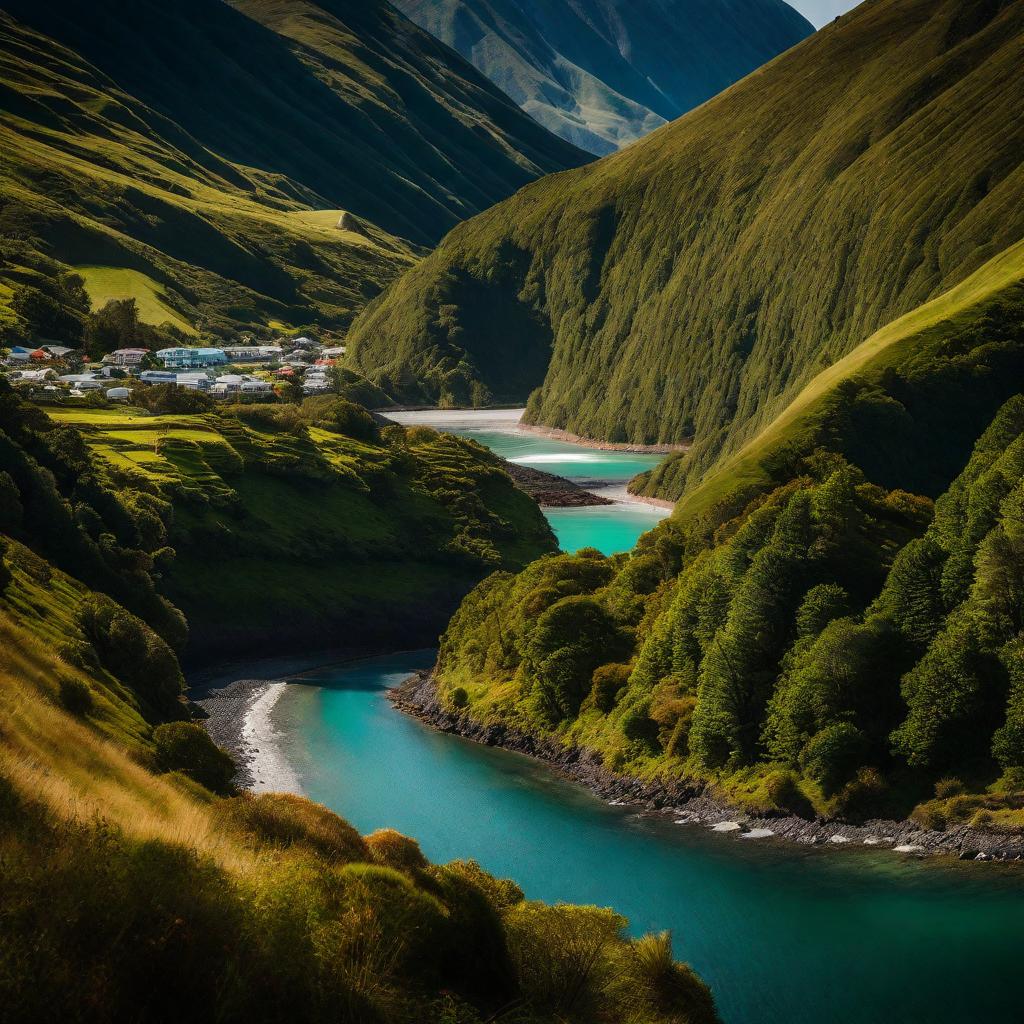
Introduce : 8 Best places for Solo travelling in Brazil
I. Brief Overview of Solo Traveling
Solo traveling, the art of embarking on adventures alone, has emerged as a popular trend among globetrotters seeking freedom, self-discovery, and new experiences. It offers an unparalleled opportunity to explore the world on your terms, without the constraints of group dynamics or the need to compromise on your itinerary. Whether you’re a seasoned traveler or venturing out for the first time, solo travel promises a journey of personal growth, cultural immersion, and unforgettable memories.
II. Why Brazil is a Great Destination for Solo Travelers
A. Cultural Diversity
Brazil, with its vast expanse and rich cultural heritage, beckons solo travelers with a myriad of experiences waiting to be discovered. From the rhythms of samba echoing through the streets of Rio de Janeiro to the tranquil beauty of the Amazon rainforest, Brazil offers a tapestry of cultures, traditions, and landscapes that captivate the senses. Solo travelers can immerse themselves in the vibrant spirit of Brazilian culture, forging connections with locals and fellow travelers along the way.
B. Warm Hospitality
Brazilian hospitality is renowned worldwide for its warmth, generosity, and inclusivity. Solo travelers will find themselves welcomed with open arms, whether they’re exploring bustling cities or remote villages. From sharing a meal with a local family to joining in a spontaneous street party, the people of Brazil embrace visitors as honored guests, creating a sense of belonging and camaraderie that transcends language barriers and cultural differences.
C. Diverse Landscapes
From the sun-kissed beaches of Copacabana to the awe-inspiring waterfalls of Iguaçu, Brazil boasts an abundance of natural wonders that cater to every traveler’s interests. Solo adventurers can embark on epic journeys, trekking through lush rainforests, scaling towering mountains, or cruising along winding rivers. Whether you’re seeking adrenaline-fueled adventures or peaceful moments of solitude, Brazil offers a diverse array of landscapes and ecosystems to explore.
1. Rio de Janeiro :
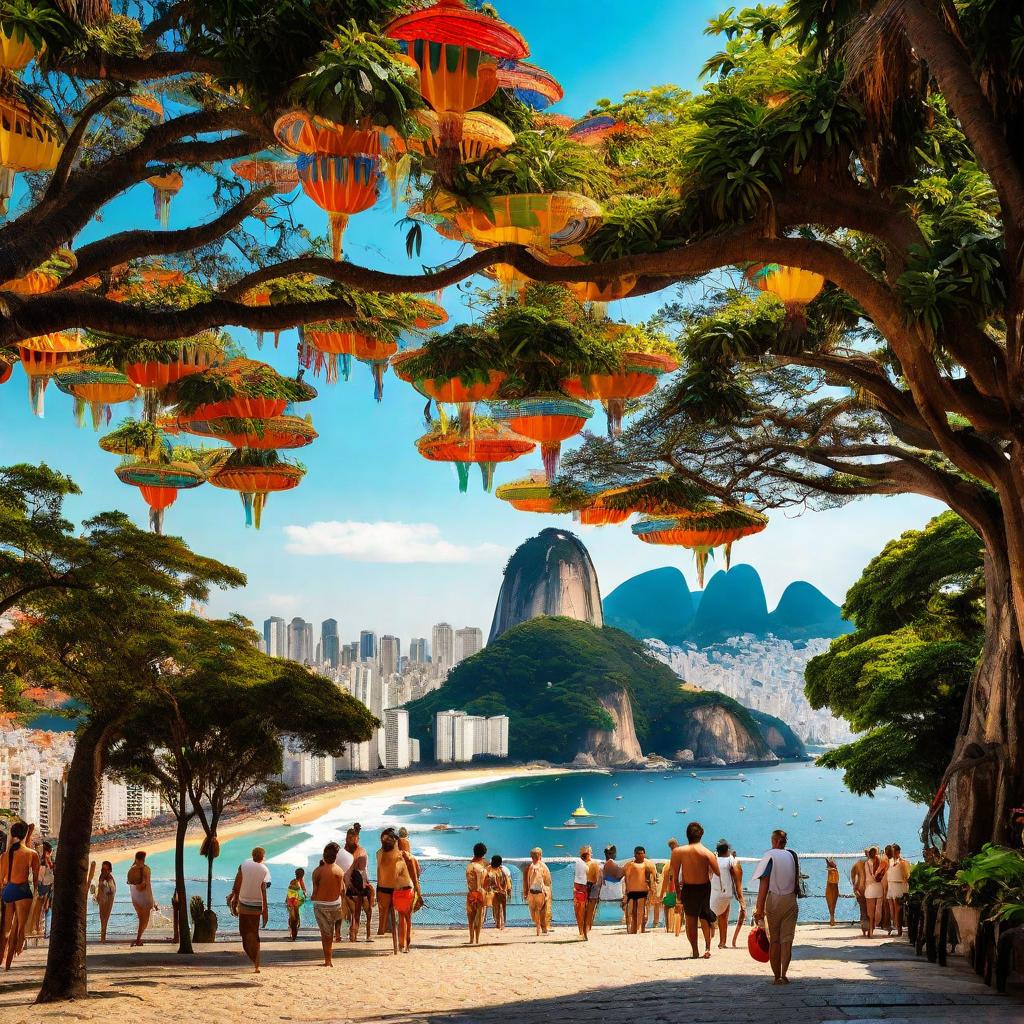
Introduction to Rio de Janeiro
Rio de Janeiro, often referred to simply as Rio, is a city that captivates the hearts of millions with its breathtaking landscapes, vibrant culture, and pulsating energy. Situated on Brazil’s southeastern coast, Rio is renowned for its stunning beaches, iconic landmarks, and electrifying carnival celebrations. In this comprehensive guide, we’ll delve into the essence of Rio de Janeiro, exploring its iconic attractions, dynamic nightlife scene, and essential safety tips for solo travelers.
I. Iconic Attractions
A. Christ the Redeemer
One of the most iconic symbols of Rio de Janeiro, Christ the Redeemer stands majestically atop the Corcovado mountain, offering panoramic views of the city below. This colossal statue of Jesus Christ, with outstretched arms embracing the skyline, is a UNESCO World Heritage Site and a testament to Brazil’s rich cultural heritage. Visitors can reach the statue via a scenic train ride through the Tijuca National Park or by hiking the picturesque trails for a more adventurous experience.
B. Sugarloaf Mountain
Rising dramatically from the waters of Guanabara Bay, Sugarloaf Mountain is another must-see attraction in Rio de Janeiro. Accessible by cable car, this granite peak offers unparalleled vistas of the city, the Atlantic Ocean, and the surrounding landscape. Sunset is an ideal time to visit, as the sky transforms into a canvas of vibrant hues, casting a magical glow over the cityscape below.
II. Vibrant Nightlife
A. Lapa Neighborhood
Renowned for its lively atmosphere and eclectic mix of bars, clubs, and live music venues, the Lapa neighborhood is the beating heart of Rio’s nightlife scene. From samba rhythms pulsating through the streets to impromptu street parties, Lapa exudes an infectious energy that beckons revelers to dance the night away. Visitors can sample authentic Brazilian cuisine, sip on refreshing caipirinhas, and immerse themselves in the rhythmic beats of local musicians.
B. Samba Clubs
No visit to Rio de Janeiro is complete without experiencing the soul-stirring rhythms of samba. Throughout the city, an array of samba clubs and dance halls offer visitors the opportunity to witness this vibrant dance form firsthand. From intimate venues showcasing traditional samba performances to extravagant clubs featuring electrifying samba shows, there’s no shortage of options for samba enthusiasts to indulge in Rio’s rhythmic pulse.
III. Safety Tips for Solo Travelers
While Rio de Janeiro is undeniably captivating, it’s essential for solo travelers to prioritize safety and exercise caution during their visit. Here are some practical tips to ensure a safe and enjoyable experience:
Stay in Well-Lit Areas: When exploring the city after dark, stick to well-lit streets and avoid dimly lit areas, especially in secluded neighborhoods.
Be Mindful of Valuables: Keep your belongings secure and avoid flashy jewelry or expensive electronics that may attract unwanted attention.
Use Reliable Transportation: Opt for licensed taxis or ride-sharing services when traveling around the city, especially at night. Avoid accepting rides from unofficial or unmarked vehicles.
Stay Informed: Stay updated on current events and safety advisories, and heed the advice of locals and trusted sources when planning your itinerary.
Trust Your Instincts: If a situation feels unsafe or uncomfortable, trust your instincts and remove yourself from the environment. It’s always better to err on the side of caution.
2. Salvador :
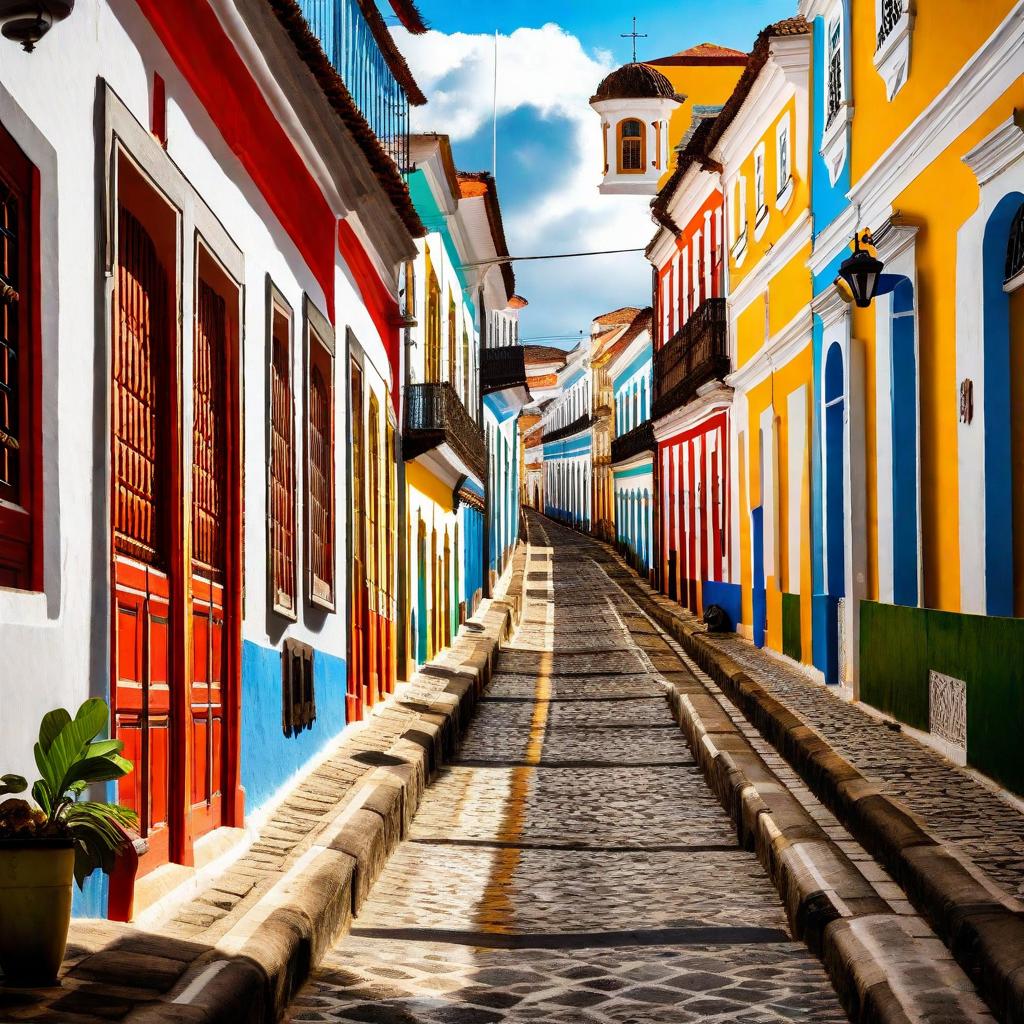
I. Historic Center: Pelourinho
A. Timeless Architecture
Salvador’s historic center, Pelourinho, is a treasure trove of architectural wonders. Its cobblestone streets and colorful colonial buildings transport visitors back in time to Brazil’s colonial era. Admire the intricate facades of churches like the São Francisco Church and Convent, adorned with Baroque embellishments and golden accents, showcasing the city’s rich architectural heritage.
B. Cultural Heritage
Pelourinho isn’t just about stunning architecture; it’s a living museum of Afro-Brazilian culture. Wander through its vibrant streets and encounter the rhythmic beats of capoeira performers showcasing this unique martial art form. Explore museums like the Afro-Brazilian Museum, delving into the rich history and traditions of Bahia’s African diaspora, making Pelourinho a cultural hub that celebrates diversity and heritage.
II. Embracing Afro-Brazilian Culture
A. The Art of Capoeira
Capoeira, a blend of martial arts, dance, and music, is deeply ingrained in Salvador’s cultural fabric. Originating from enslaved Africans in Brazil, capoeira served as a form of resistance and cultural expression. Today, visitors can witness captivating capoeira performances in Pelourinho, where skilled practitioners showcase their agility, strength, and grace, keeping this centuries-old tradition alive.
B. Spiritual Traditions: Candomblé
Candomblé, a syncretic religion with roots in Africa, is an integral part of Salvador’s cultural landscape. Blending elements of African spirituality with Catholicism, Candomblé ceremonies are vibrant celebrations of faith, music, and dance. Travelers can immerse themselves in this spiritual tradition by visiting Candomblé terreiros, where rituals honoring ancestral spirits and orixás unfold, offering insight into Bahia’s rich religious heritage.
III. Sun, Sand, and Sea: Salvador’s Beaches
A. Porto da Barra
Porto da Barra Beach, nestled along the shores of All Saints Bay, is a paradise for beach lovers. Its tranquil waters and golden sands provide the perfect setting for sunbathing, swimming, and water sports. Take a leisurely stroll along the promenade, savoring the panoramic views of the bay and enjoying refreshments from beachside vendors, immersing yourself in the laid-back coastal vibe of Salvador.
B. Relaxation at Flamengo Beach
For those seeking seclusion and natural beauty, Flamengo Beach offers a serene escape from the city’s hustle and bustle. Its pristine shores, framed by coconut palms and turquoise waters, invite visitors to unwind and recharge. Whether you’re lounging in a hammock, indulging in fresh seafood at a beachfront restaurant, or simply soaking in the breathtaking coastal scenery, Flamengo Beach epitomizes the tranquility and charm of Salvador’s coastal lifestyle.
3.Amazon Rainforest :
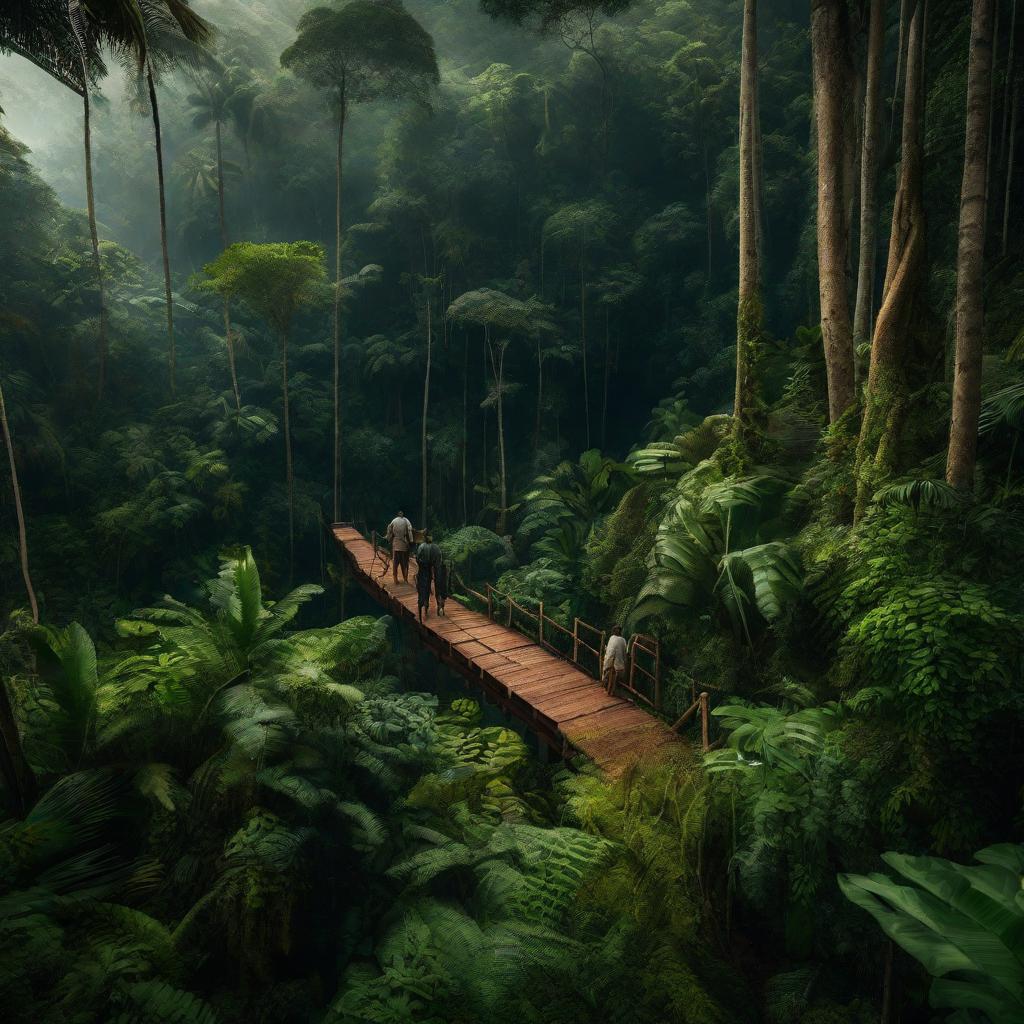
For a truly immersive nature experience, head to the Amazon Rainforest in Brazil. Embark on a jungle adventure, spot diverse wildlife species, and stay in eco-friendly lodges surrounded by lush greenery.
I. Introduction to the Amazon Rainforest
A. An Overview of the Amazon
The Amazon Rainforest, often referred to as the “lungs of the Earth,” is the largest tropical rainforest in the world, spanning nine countries across South America. Encompassing over 6.7 million square kilometers, this vast and diverse ecosystem is home to unparalleled biodiversity, with millions of species of plants, animals, and insects calling it home.
B. Importance of the Amazon
The Amazon Rainforest plays a crucial role in regulating the Earth’s climate, storing vast amounts of carbon dioxide and producing oxygen through photosynthesis. It also serves as a vital source of freshwater, influencing weather patterns and supporting indigenous communities that have lived in harmony with the forest for centuries.
II. Biodiversity of the Amazon
A. Flora and Fauna
The Amazon Rainforest boasts an astonishing array of plant and animal life, with new species being discovered regularly. From towering canopy trees to vibrant orchids and bromeliads, the flora of the Amazon is as diverse as it is awe-inspiring. Meanwhile, the forest floor teems with life, from elusive jaguars and colorful macaws to tiny tree frogs and leafcutter ants.
B. Indigenous Communities
The Amazon is also home to numerous indigenous tribes that have inhabited the region for thousands of years. These communities rely on the forest for food, shelter, and medicine, maintaining traditional lifestyles and cultural practices passed down through generations. Their intimate knowledge of the rainforest is invaluable for conservation efforts and sustainable management of natural resources.
III. Threats to the Amazon
A. Deforestation
Despite its ecological importance, the Amazon Rainforest faces numerous threats, chief among them being deforestation. Illegal logging, agricultural expansion, and infrastructure projects pose significant risks to the integrity of the forest, leading to habitat loss, biodiversity decline, and increased carbon emissions.
B. Climate Change
Climate change exacerbates the challenges facing the Amazon, with rising temperatures and shifting rainfall patterns affecting the health of the ecosystem. Droughts, wildfires, and extreme weather events pose immediate threats to both the forest and the communities that depend on it for their livelihoods.
IV. Conservation Efforts
A. Protected Areas
Efforts to conserve the Amazon Rainforest include the creation of protected areas, national parks, and indigenous territories aimed at preserving biodiversity and traditional land rights. These areas serve as refuges for wildlife and provide opportunities for sustainable ecotourism, generating income for local communities while safeguarding natural habitats.
4. Florianópolis
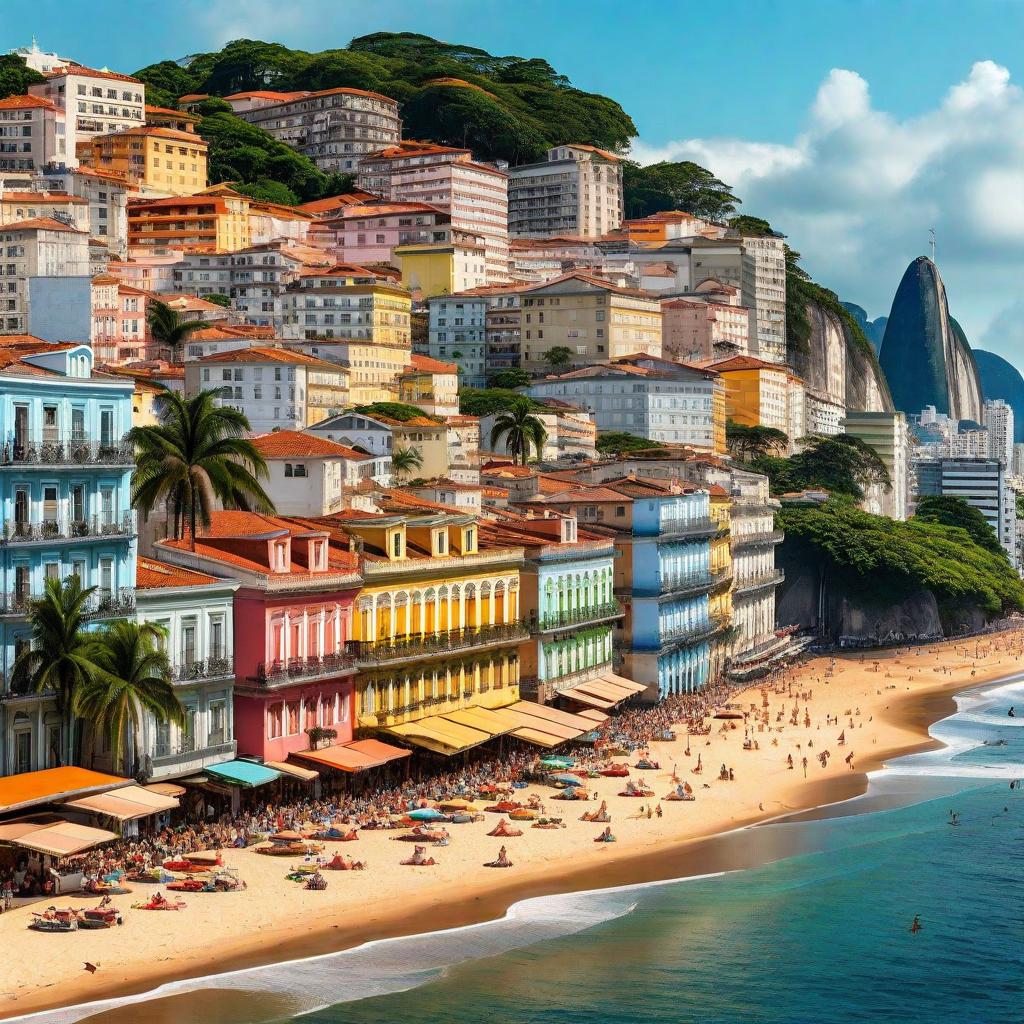
Known for its pristine beaches and vibrant nightlife, Florianópolis is a paradise for solo travelers seeking sun, sea, and relaxation. Explore the charming fishing villages, try water sports like surfing and windsurfing, and feast on fresh seafood at beachside restaurants.
I. Introduction to Florianópolis
A. Overview of Florianópolis
Florianópolis, often referred to as “Floripa” by locals, is a captivating destination situated in southern Brazil. Boasting pristine beaches, lush landscapes, and a vibrant cultural scene, Florianópolis offers visitors a perfect blend of relaxation and adventure. From island hopping to surfing and exploring natural wonders, there’s something for everyone in this enchanting city.
II. Island Hopping in Florianópolis
A. Ilha do Campeche
Ilha do Campeche, with its crystal-clear waters and white sandy beaches, is a paradise for nature lovers and beach enthusiasts. Accessible by boat from the mainland, this uninhabited island is renowned for its archaeological sites, hiking trails, and vibrant marine life. Visitors can snorkel in the turquoise waters, explore ancient rock formations, or simply relax on the pristine shores, soaking in the island’s serene ambiance.
B. Ilha de Santa Catarina
Ilha de Santa Catarina, the main island of Florianópolis, is a playground for outdoor enthusiasts and adventure seekers. With over 40 beaches scattered along its coastline, the island offers endless opportunities for surfing, kiteboarding, and other water sports. From bustling tourist hotspots to secluded coves and hidden gems, there’s a beach for every mood and occasion on Ilha de Santa Catarina.
III. Surfing and Water Sports
A. Surfing
Florianópolis is renowned as one of Brazil’s premier surfing destinations, attracting surfers from around the world with its world-class waves and consistent swells. Popular surf spots such as Praia Mole, Joaquina Beach, and Barra da Lagoa offer ideal conditions for surfers of all skill levels, from beginners to seasoned pros. Whether you’re catching your first wave or honing your skills on a challenging break, Florianópolis promises an unforgettable surfing experience.
B. Water Sports
In addition to surfing, Florianópolis offers a wide range of water sports and recreational activities for thrill-seekers and adrenaline junkies. From windsurfing and stand-up paddleboarding to jet skiing and parasailing, there’s no shortage of ways to get your heart racing on the waters surrounding the island. With professional instructors and rental facilities readily available, visitors can easily dive into the excitement and make the most of their time in Florianópolis.
IV. Natural Beauty of Florianópolis
A. Lagoa da Conceição
Lagoa da Conceição is a picturesque lagoon nestled between lush hills and sand dunes, offering stunning views and recreational opportunities for visitors. The area is a popular destination for hiking, cycling, and water sports, with its calm waters ideal for stand-up paddleboarding and kayaking. Surrounding the lagoon, charming cafes, boutique shops, and artisan markets add to the area’s allure, making it a must-visit destination in Florianópolis.
B. Sand Dunes
Florianópolis is home to breathtaking sand dunes that offer a unique and memorable outdoor experience. Located near Joaquina Beach, the sand dunes are perfect for sandboarding, dune buggy rides, and sunset picnics. Visitors can climb to the top of the dunes for panoramic views of the coastline and surrounding landscapes, capturing the natural beauty of Florianópolis in all its splendor.
5. Pantanal :
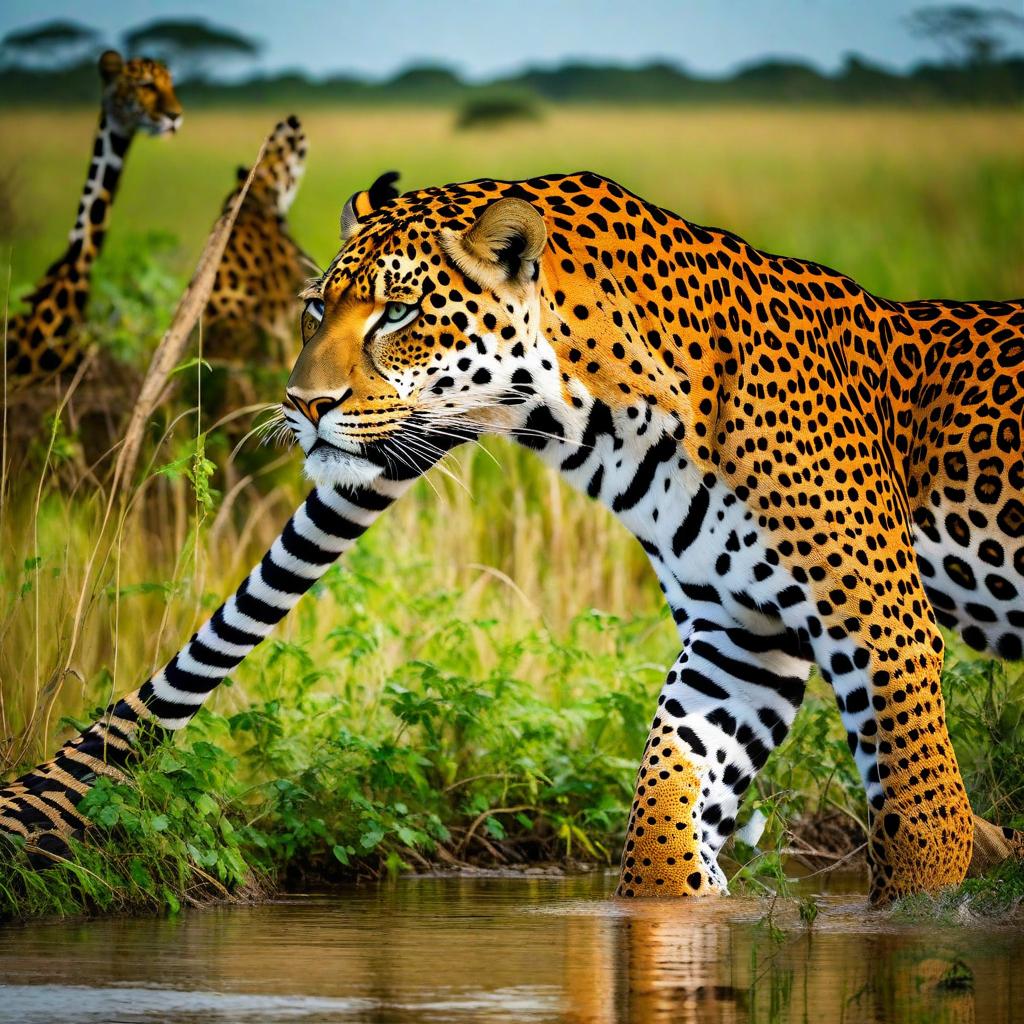
If you’re a wildlife enthusiast, the Pantanal region of Brazil is the perfect destination for solo travelers. Explore one of the world’s largest tropical wetland areas, spot jaguars, caimans, and colorful birds, and enjoy a peaceful retreat in nature.
I. Introduction to the Pantanal
A. Overview of the Pantanal
The Pantanal, located primarily in Brazil but also extending into Bolivia and Paraguay, is the world’s largest tropical wetland area. Covering an astonishing 140,000 square kilometers, the Pantanal is a biodiverse paradise teeming with wildlife, natural wonders, and unparalleled beauty. From vibrant ecosystems to diverse habitats, the Pantanal offers visitors a unique opportunity to immerse themselves in the wonders of nature.
II. Wildlife of the Pantanal
A. Flora and Fauna
The Pantanal is home to an extraordinary array of plant and animal species, making it one of the most biodiverse regions on the planet. With its vast floodplains, lush forests, and crystal-clear rivers, the Pantanal provides habitat for iconic wildlife such as jaguars, capybaras, giant otters, and caimans. Birdwatchers will delight in the chance to spot over 650 species of birds, including majestic toucans, colorful macaws, and elusive jabiru storks.
B. Jaguar Spotting
The Pantanal is renowned as one of the best places in the world to spot jaguars in the wild. These magnificent big cats roam the banks of rivers and waterways, hunting for prey and basking in the sun. Visitors can embark on guided boat tours and safaris, led by expert local guides who know the best spots for observing jaguars in their natural habitat. Witnessing these elusive predators in the wild is an unforgettable experience that draws wildlife enthusiasts from around the globe.
III. Ecotourism in the Pantanal
A. Sustainable Travel Practices
Ecotourism plays a vital role in the conservation of the Pantanal, providing economic incentives for local communities to protect and preserve this unique ecosystem. Responsible tourism operators offer a range of immersive experiences, including guided wildlife tours, birdwatching expeditions, and educational programs focused on environmental conservation and sustainability. By supporting ecotourism initiatives, visitors can contribute to the long-term protection of the Pantanal while enjoying unforgettable adventures in nature.
B. Adventure Activities
In addition to wildlife viewing, the Pantanal offers a wealth of outdoor activities for adventure seekers and nature lovers. Visitors can explore the wetlands by boat, kayak, or canoe, navigating through labyrinthine waterways and hidden channels in search of wildlife encounters. Hiking and horseback riding excursions provide opportunities to explore the Pantanal’s diverse landscapes, from flooded plains and dense forests to open savannahs and grasslands.
IV. Conservation Challenges and Efforts
A. Threats to the Pantanal
Despite its ecological significance, the Pantanal faces numerous threats, including deforestation, agricultural expansion, and climate change. Illegal logging, cattle ranching, and infrastructure development pose risks to the integrity of the wetland ecosystem, leading to habitat loss, water pollution, and fragmentation of wildlife corridors.
6. Bonito :
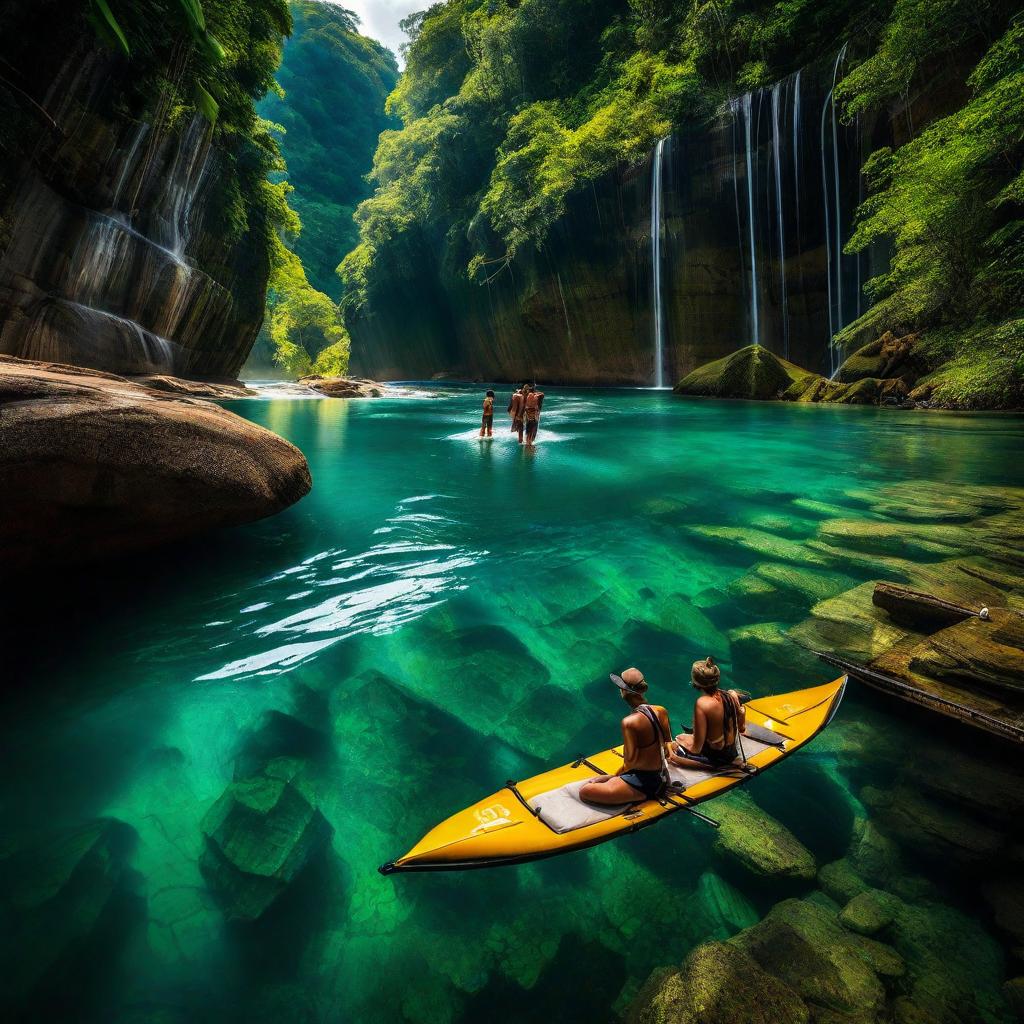
I. Introduction to Bonito
A. Overview of Bonito
Nestled in the heart of Brazil’s Mato Grosso do Sul state, Bonito is a hidden gem waiting to be discovered. Renowned for its crystal-clear rivers, lush forests, and stunning natural attractions, Bonito offers visitors a glimpse into the pristine beauty of the Brazilian wilderness. From snorkeling in crystal-clear waters to exploring ancient caves and waterfalls, Bonito promises an unforgettable adventure for nature lovers and outdoor enthusiasts alike.
II. The Marvels of Bonito’s Waters
A. Snorkeling in Aquamarine Waters
One of the highlights of a visit to Bonito is snorkeling in its pristine rivers and natural pools. Dive into the crystal-clear waters of attractions like the Rio da Prata and the Sucuri River, where visibility exceeds 30 meters, offering unparalleled views of underwater landscapes and colorful aquatic life. Swim alongside schools of fish, glide past limestone formations, and marvel at the beauty of Bonito’s aquatic ecosystems.
B. Exploring Underground Rivers and Caves
Bonito is home to a vast network of underground rivers and caves, carved out over millions of years by the forces of nature. Embark on a guided cave tour to discover breathtaking stalactites, stalagmites, and underground rivers that wind their way through subterranean chambers. Visit iconic attractions like the Gruta do Lago Azul (Blue Lake Cave), where a mesmerizing underground lake reflects the azure hues of the sky above, creating a magical spectacle.
III. Adventures in the Forests of Bonito
A. Hiking and Wildlife Watching
The forests surrounding Bonito are teeming with life, providing habitat for a diverse array of flora and fauna. Lace up your hiking boots and explore scenic trails that wind through lush forests and rugged terrain, offering glimpses of exotic birds, monkeys, and other wildlife. Keep your eyes peeled for toucans, macaws, and capuchin monkeys as you immerse yourself in the sights and sounds of the Brazilian wilderness.
B. Eco-friendly Adventure Activities
In addition to hiking, Bonito offers a variety of eco-friendly adventure activities that allow visitors to explore its natural wonders while minimizing their environmental impact. Try your hand at tree climbing, zip-lining, or horseback riding through pristine landscapes, guided by experienced local instructors who prioritize safety and sustainability. Whether you’re seeking adrenaline-fueled thrills or peaceful moments in nature, Bonito has something for everyone.
IV. Conservation and Sustainability
A. Preserving Natural Resources
Bonito is committed to preserving its natural resources and promoting sustainable tourism practices that protect the environment and benefit local communities. Conservation initiatives focus on reforestation, waste management, and responsible tourism development, ensuring that future generations can continue to enjoy the beauty of Bonito for years to come.
B. Community Involvement
Local communities play a crucial role in the conservation efforts of Bonito, with initiatives that empower residents to become stewards of their environment. Community-based ecotourism projects provide economic opportunities for rural populations while fostering a sense of pride and ownership in protecting their natural heritage. By supporting community-led initiatives, visitors can contribute to the preservation of Bonito’s unique ecosystems and cultural heritage.
7. Chapada Diamantina
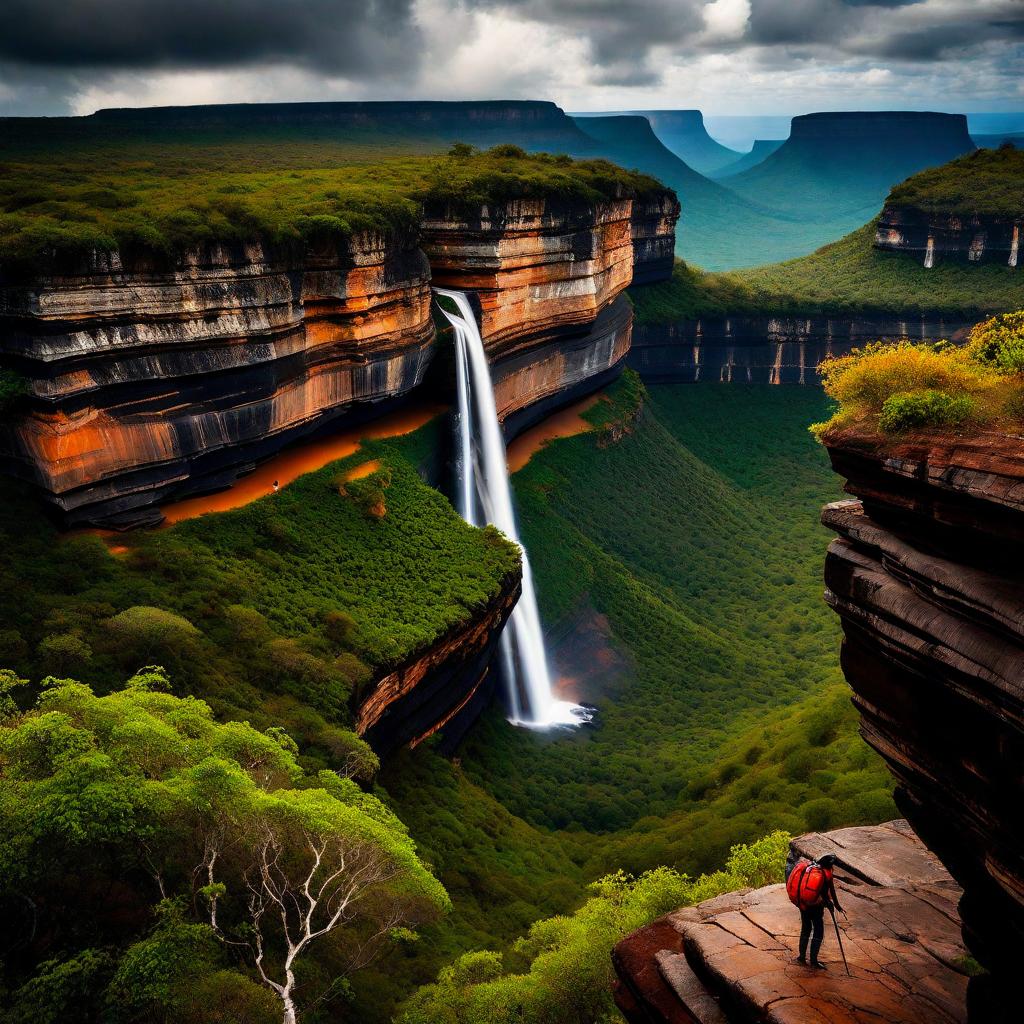
Geography: Chapada Diamantina is characterized by its rugged terrain, with vast plateaus punctuated by deep canyons and river valleys. The region is part of the larger Brazilian Highlands, known for its diverse ecosystems and unique geological formations.
History: The name “Chapada Diamantina” translates to “Diamond Plateau,” reflecting its historical significance as a diamond mining area in the 19th century. While diamond mining has declined, the legacy of this era is still evident in the region’s cultural heritage and preserved mining towns.
Natural Attractions:
- Waterfalls: Chapada Diamantina is home to numerous breathtaking waterfalls, including the stunning Fumaça Waterfall, one of Brazil’s highest waterfalls, plunging from a height of over 300 meters. Other notable waterfalls include Cachoeira da Fumaça, Cachoeira da Purificação, and Cachoeira do Mosquito.
- Caves: The region boasts an extensive network of limestone caves, some of which are open to visitors for exploration. Gruta da Lapa Doce and Gruta da Pratinha are among the most popular caves, featuring impressive stalactites, stalagmites, and underground lakes.
- Tabletop Mountains: Chapada Diamantina is dotted with impressive tabletop mountains known as “mesas,” offering panoramic views of the surrounding landscapes. Pico do Barbado is the highest peak in the region, providing adventurous hikers with rewarding trekking opportunities.
- Natural Pools: Visitors can cool off in crystal-clear natural pools fed by freshwater springs, such as Poço Azul and Poço Encantado. These pools are renowned for their striking blue hues and underwater rock formations.
Outdoor Activities: The region offers a plethora of outdoor activities for adventure enthusiasts, including hiking, trekking, rock climbing, canyoning, and mountain biking. The diverse landscapes provide endless opportunities for exploration and discovery, with well-marked trails leading to hidden gems.
Ecotourism and Conservation: Chapada Diamantina is recognized for its commitment to ecotourism and environmental conservation. Local communities and authorities work together to preserve the region’s natural beauty and biodiversity, promoting sustainable tourism practices and responsible stewardship of the land.
8. Iguazu Falls :
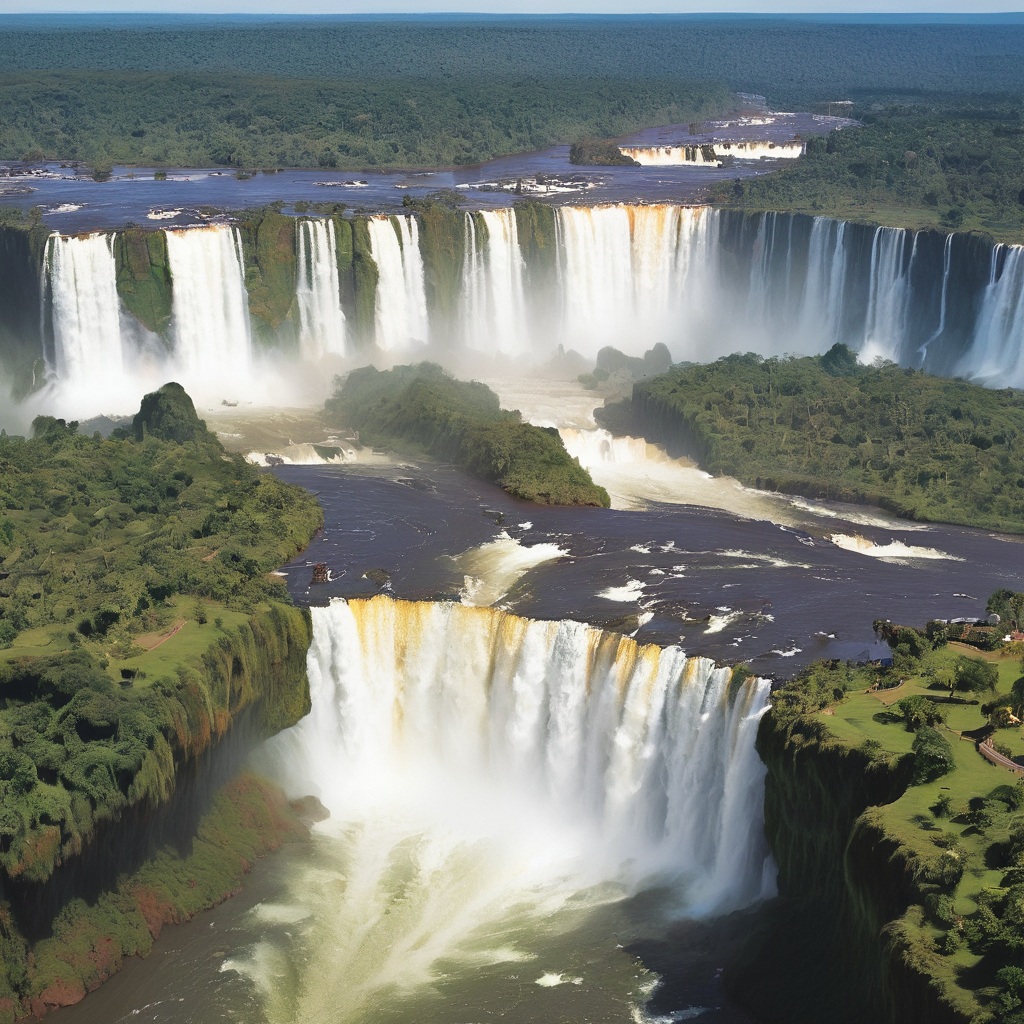
Iguazu Falls, located on the border between Brazil and Argentina, is one of the most breathtaking natural wonders in the world. The falls are part of the Iguazu River and consist of a system of 275 individual waterfalls spread over nearly 2 miles (3 kilometers) in a horseshoe shape.
Key features of Iguazu Falls include:
Scale and Power: Iguazu Falls is one of the largest waterfall systems in the world, with water cascading down from heights of up to 269 feet (82 meters). The sheer volume of water and the thunderous roar it creates is awe-inspiring, making it a truly unforgettable sight for visitors.
Devil’s Throat: The most impressive section of Iguazu Falls is known as “Garganta del Diablo” or Devil’s Throat. This U-shaped section is the tallest and deepest part of the falls, where water plunges down with incredible force, creating a constant mist that rises high into the air. Visitors can often see rainbows forming in the mist, adding to the magical atmosphere.
Natural Beauty: Surrounded by lush rainforest and rich biodiversity, the area around Iguazu Falls is a UNESCO World Heritage Site and home to numerous species of plants and animals. Visitors can explore walking trails and viewpoints that offer stunning panoramic vistas of the falls and the surrounding landscape.
Access: Both the Brazilian and Argentine sides of Iguazu Falls offer different perspectives of the cascades. The Brazilian side provides panoramic views of the entire falls complex, while the Argentine side offers closer encounters with individual falls and access to walkways that take visitors right up to the edge of the rushing waters.
Activities: In addition to admiring the falls from viewpoints and walkways, visitors can enjoy various activities such as boat rides that take them close to the base of the falls, helicopter tours for aerial views, and nature hikes through the surrounding rainforest to spot wildlife.
Also Read : Best University in France
FAQs
What are the Visa requirements for traveling to Brazil as a solo traveler?
Solo travelers to Brazil typically need a tourist visa, which can be obtained online or at the Brazilian embassy or consulate in their home country. Check the latest requirements before your trip to ensure a smooth entry into Brazil.
How can solo travelers stay safe in Brazil?
While Brazil is generally safe for solo travelers, it’s essential to remain vigilant, especially in crowded tourist areas. Avoid displaying valuables, use trusted transportation services, and be cautious when exploring unfamiliar neighborhoods.
Is it easy to communicate with locals in Brazil as an English-speaking traveler?
While Portuguese is the official language in Brazil, many locals in tourist areas and major cities speak English to varying degrees. Learning basic Portuguese phrases can enhance your travel experience, but don’t be afraid to communicate in English, as most Brazilians are friendly and accommodating.

